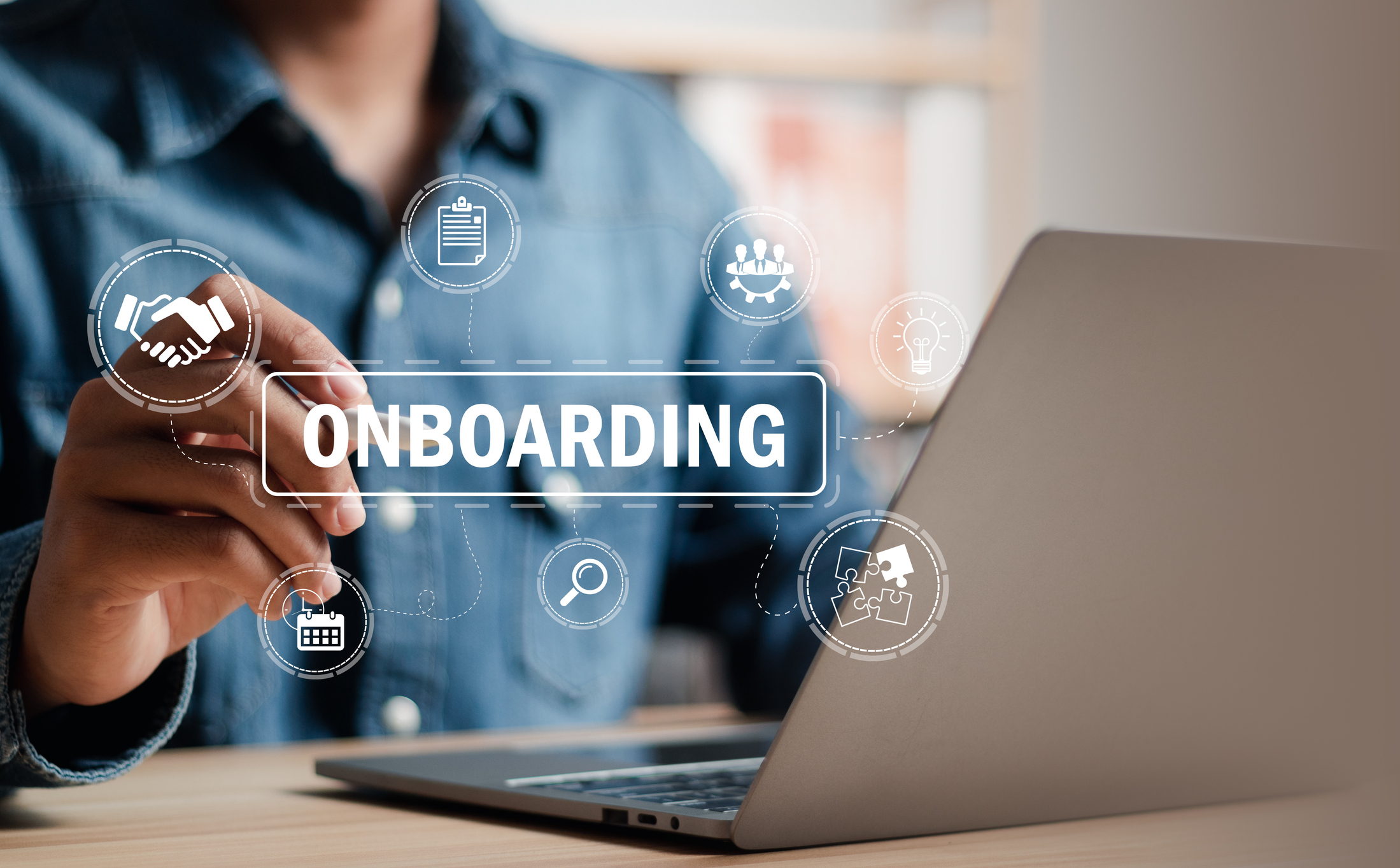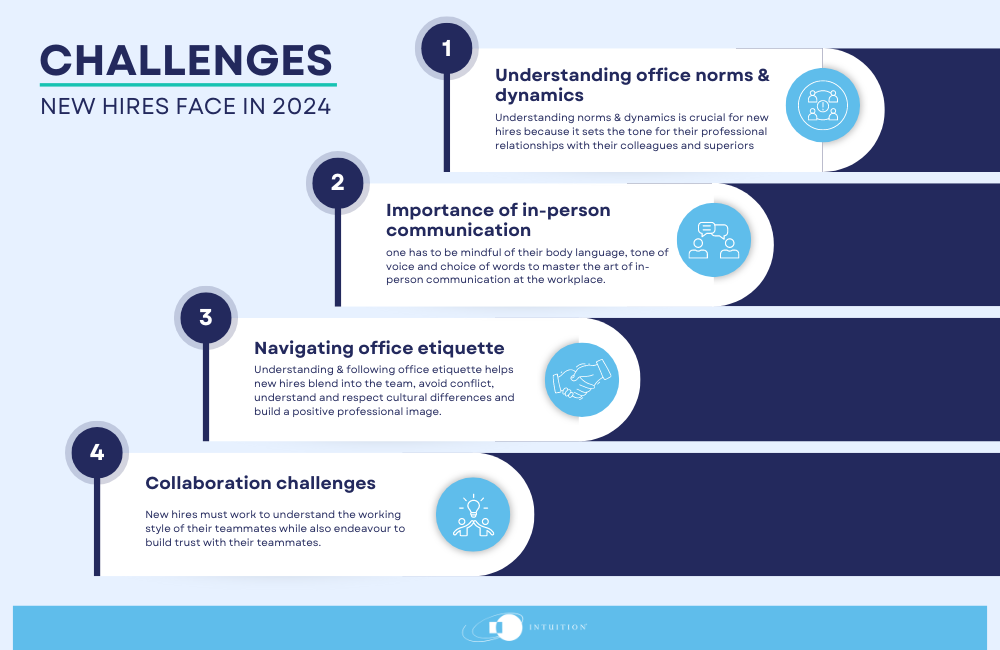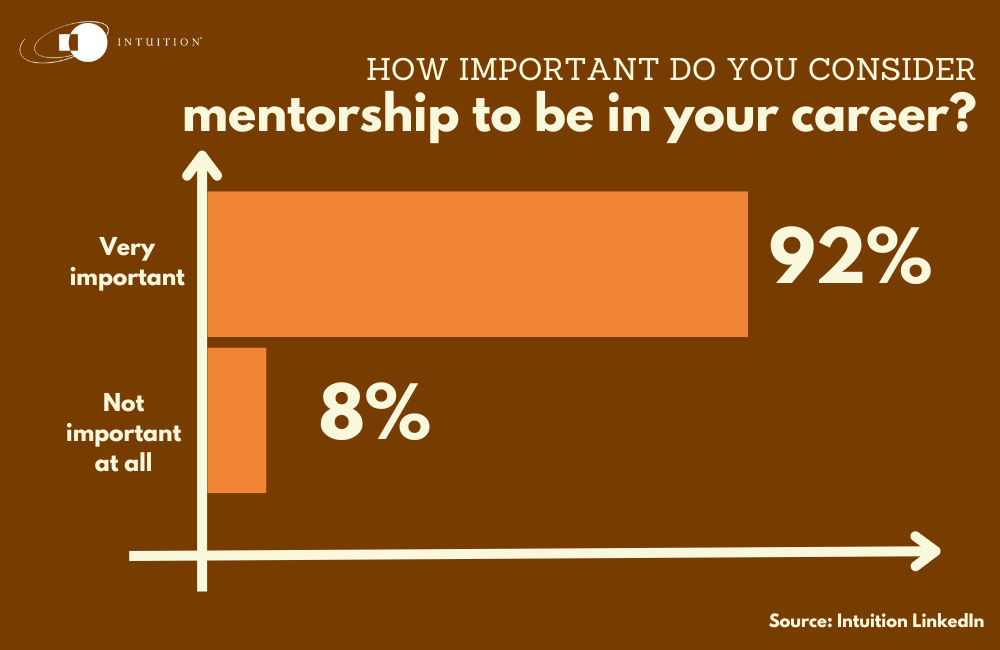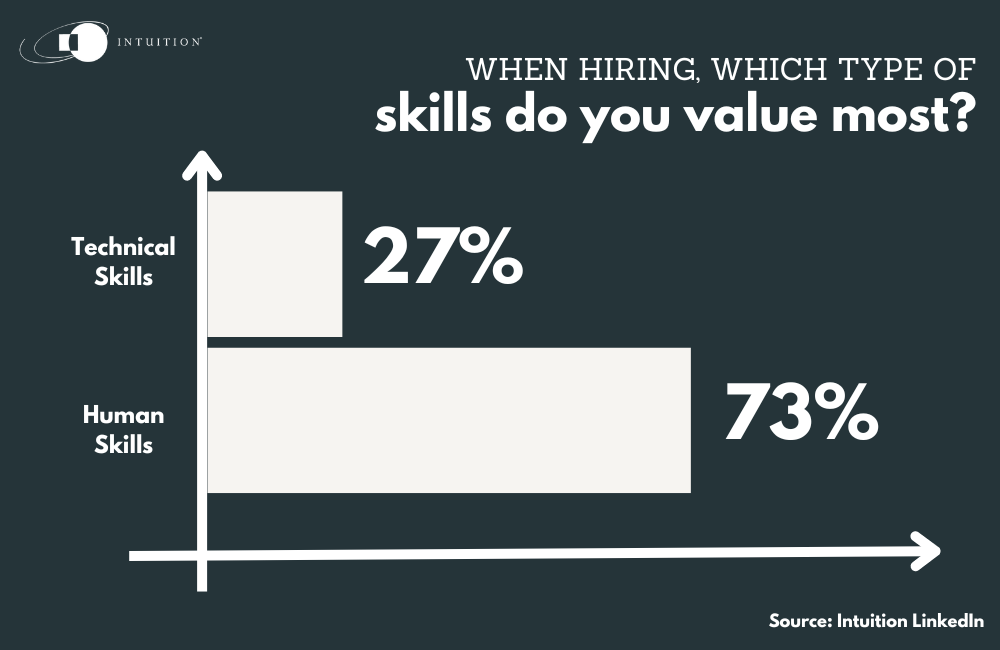Unpacking the challenges new hires face in 2024
The first day for new hires presents any individual with a mix of emotions. The excitement of starting afresh, the nervousness of fitting in, and the pressure of performing well. Everyone from a CEO to a junior staffer has had to navigate this journey, and it is never easy. The challenges new hires face in adapting to office norms and dynamics are multi-fold. They have to understand the company’s culture, learn the office etiquette, and adapt to individuals’ communication styles, among a myriad of other related challenges. In this article, we will explore the issues new hires face in adapting to office norms and dynamics.
New hires are stepping, often nervously, into an already established ecosystem. Each organization has its unique culture, work ethics, and interpersonal dynamics. The new employee has to learn and adapt to these norms quickly to be efficient and effective. They have to navigate through the formal and informal rules, understand power dynamics, and learn and adapt to the office etiquette.
In the journey of acclimatizing to a new environment, new hires often face several hurdles. They may struggle to understand the office norms, face difficulties in communication, and have a hard time collaborating with some of their teammates. The transition phase can be overwhelming and stressful for even the most confident and accomplished of individuals.
Other articles in this series:
[Trends shaping the of future onboarding in 2024]
[How networking fosters professional relationships for new hires]
[How hybrid work eases the transition for new hires]
[How continuous learning and development shapes success for new hires]

Understanding office norms and dynamics
Office norms and dynamics form the backbone of any organization. They dictate the way people behave, communicate, and work together. It is very often as if there is an unwritten code of conduct that everyone in the office instinctively follows. Understanding these norms and dynamics is crucial for new hires as they set the tone for their professional relationship with their colleagues and superiors.
However, uncovering and understanding these unwritten rules can be a daunting task. Every company has its unique set of norms and dynamics. These could vary from simple issues such as the dress code and lunch break timings to more complex mechanisms such as decision-making processes and conflict resolution. Understanding these nuances is important for the new hires to adapt and integrate into the team.
Moreover, understanding the power dynamics in the office is equally important. It is crucial to know who holds the power and influence in the team, how decisions are made, and indeed how conflicts are resolved. Misunderstanding or misreading these dynamics could lead to missteps and unnecessary disputes.
The importance of in-person communication in the workplace
One of the key challenges that new hires face is adapting to the communication style of the office. Communication is the lifeblood of any successful organization. It facilitates the exchange of ideas, fosters collaboration, and aids in conflict resolution. In-person communication, which fosters a sense of connection and camaraderie among the team members, plays a particularly crucial role.
It allows for immediate feedback, better understanding, and promotes empathy. It is especially important for new hires as it helps them build rapport with their colleagues and superiors in a relatively short period of time.
However, mastering the art of in-person communication is not easy. One has to be mindful of body language, tone of voice, and choice of words. They have to learn to listen actively, communicate clearly, and respond effectively.
Added to this is the fact that the new hires of today have spent a considerable portion of their lives in a digital environment, thereby making the integration process particularly complex.
Navigating office etiquette
Adapting to office etiquette is another tricky hurdle new hires have to negotiate. Office etiquette could be characterized as a set of unwritten rules that govern behavior in the workplace. It could include anything from how to address superiors to how to conduct oneself in meetings.
Understanding and following office etiquette is crucial for new hires. It helps them to blend into the team, avoid conflicts, and build a positive professional image. However, navigating through these unwritten rules can be tricky. What might be acceptable in one organization may not be so in another.
Moreover, in the diverse and inclusive workplace of today, understanding and respecting the cultural and personal differences of colleagues is frequently a part of office etiquette. New hires have to be mindful of these differences and ensure that their behavior is respectful and inclusive.
Collaboration challenges
Collaboration is at the heart of any successful team. However, for new hires, collaborating with a new set of people, each with their unique working style, can be challenging.
Firstly, new hires have to understand the working style of their teammates. Some might prefer direct communication; others might prefer a more subtle approach. Some might be detail-oriented; others might be big-picture thinkers. Understanding these differences and adapting to them is crucial for effective collaboration.
Secondly, new hires have to build trust with their teammates. Trust is the foundation of any successful collaboration. It takes time and effort to build trust. New hires have to prove their reliability, competence, and integrity to earn this trust.

Company strategies for facilitating new hire adjustment
To help new hires navigate through these challenges, companies can adopt several strategies. They can provide a comprehensive onboarding program to help new hires understand the company culture, office norms, and communication style. They can assign a mentor to guide them through the transition phase. They can also organize in-person social events to help new hires build rapport with their colleagues.
Moreover, companies can also provide effective human skills training to the new hires. This training can equip them with the skills required to communicate effectively in the workplace. It can help them understand the nuances of in-person communication, master the art of active listening, and learn to respond effectively.
The role of mentorship programs
Mentorship programs can play a crucial role in easing the transition for new hires. A mentor can guide a new hire through the labyrinth of office norms and dynamics. They can provide valuable insights into company culture, power dynamics, and office etiquette. They can also provide constructive feedback to help the new hire improve their performance.
Moreover, a mentor can provide emotional support to the new hire during the transition phase. They can provide a safe space for the new hire to share their concerns, doubts, and fears. They can also provide encouragement and motivation to help the new hire overcome their challenges.

The impact of in-person social events on office integration
In-person social events can significantly aid in the integration of new hires into the office. These events provide an informal platform for new hires to interact with colleagues and superiors. They provide an opportunity for new hires to build rapport, establish connections, and understand office dynamics.
Moreover, these events can also help in breaking the ice and reducing the initial, understandable awkwardness. They can help new hires feel more comfortable and accepted in the office. They can also provide a glimpse into the softer side of the company, such as the sense of humor, camaraderie, and team spirit.
Effective human skills training for new hires
Effective human skills training can equip new hires with the skills required to communicate effectively in the workplace. This training can cover various aspects of communication, such as verbal communication, non-verbal communication, and listening and feedback skills.
It can help them to be more mindful of their body language, tone of voice, and choice of words. It can also help them to master the art of active listening and responding effectively.
Moreover, it can also cover the nuances of in-person communication. It can provide tips and techniques to build rapport, handle difficult conversations, and manage conflicts.

Conclusion: Turning challenges into opportunities for growth
The journey of a new hire, from being an outsider to becoming an integral and respected part of the team, is filled with challenges. New hires have to adapt to the office norms, master the art of in-person communication, navigate through the minefield of office etiquette, and learn how to collaborate with new colleagues effectively.
However, these challenges also present opportunities for growth. They provide a chance for the new hires to learn, adapt, and grow. They provide a platform for them to build their communication skills, interpersonal, and collaboration skills.
With the right support from the company, in the form of orientation programs, mentorship programs, in-person social events, and effective communication training, these challenges can be turned into opportunities to develop relatively easily.
Navigating through the maze of office norms and dynamics may seem daunting, but with patience, perseverance, and the right support, it is entirely possible to not just survive, but thrive in the new environment.


